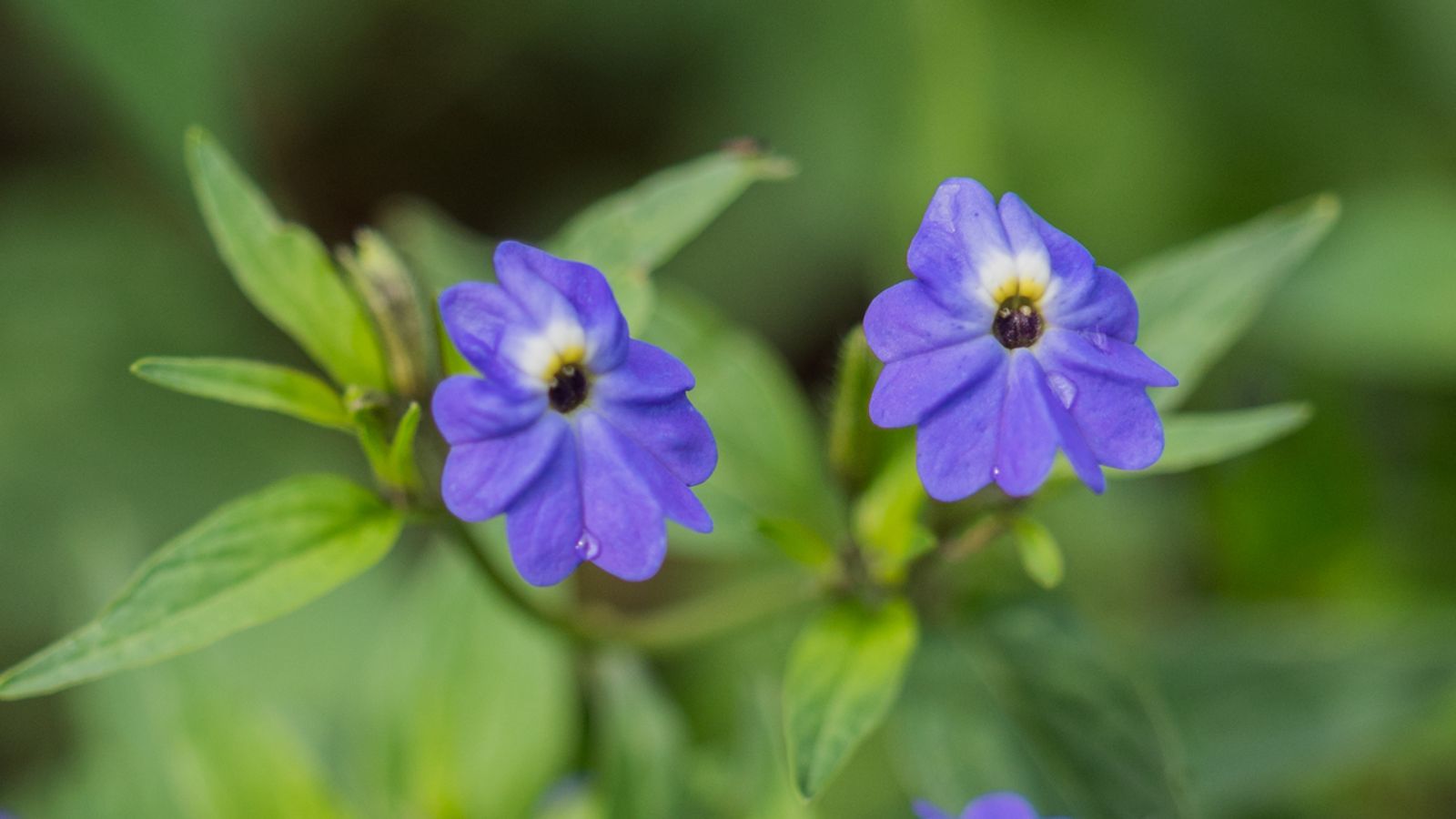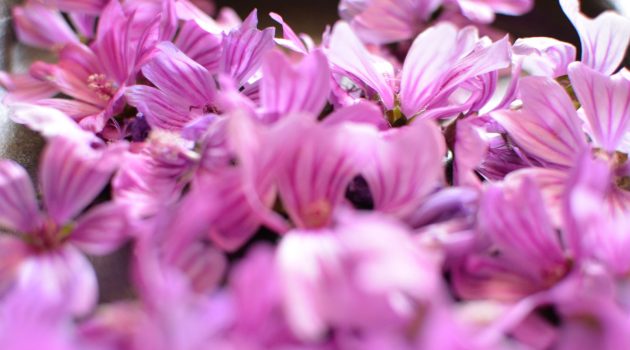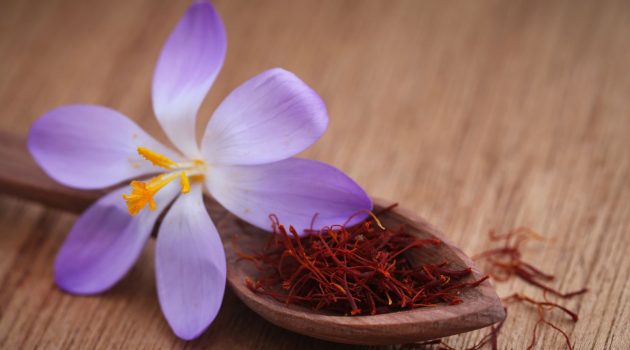The amethyst flower, with its arresting purple hues, speaks to a myriad of meanings that might resonate with you on different levels.
Traditionally, amethyst symbolizes spiritual wisdom and strength. When incorporated into a flower’s delicate form, these meanings are believed to extend into the realm of clarity, peace, and balance.
If you’re drawn to the amethyst flower, it could be reflective of an admiration for its beauty or an intrinsic pull towards its calming presence in your surroundings.
Popular among gardeners and floral enthusiasts, the amethyst flower stands out for its vivid coloring and it’s not uncommon for it to become a favorite piece in gardens and bouquets alike.
The symbolism attached to the amethyst flower is as rich as its color; the radiant shades of purple often represent nobility and luxury, making it a sought-after blossom.
Its popularity is sustained not just by its visual appeal, but also through the meanings and sentiments it conveys.
While you might choose the amethyst flower for its aesthetic beauty, the underpinning significance adds a layer of depth to your choice.
Whether used in home decor or given as a symbol of admiration, the amethyst flower’s meanings align beautifully with moments of serenity and reflection, serving as a gentle reminder of the balance and peace you might be seeking in your own life.
1. Historical and Cultural Significance
As you explore the rich tapestry of history surrounding the amethyst, you’ll find a gemstone steeped in mythology and valued across civilizations.
Its deep purple hues have not only beautified jewelry and adornments but also carried with them a legacy of spiritual and historical importance.
Mythology and Lore
In the lore of Ancient Greece, the amethyst was believed to prevent intoxication. According to Greek mythology, Bacchus, the god of wine, decreed that the stone could protect against drunkenness.
It was common for people to wear amethyst amulets or drink from goblets adorned with this gem to stay sober during feasts.
Amethyst in Historical Context
Beyond the myths, amethyst has a storied place in history. Egyptians used it as a representation of the zodiac sign of the goat—the enemy of vines and thus, wine, reinforcing its established connection to sobriety.
Amethyst also figured into the Christian church; it was associated with Christ and the crown chakra, symbolizing purity and piety.
Clerics in the Middle Ages wore amethyst rings. Its use as a symbol of royalty is evident; the gem was a favorite of royalty and frequently featured in their crowns and scepters.
Renowned for its supposed ability to quicken intelligence and dispel evil thoughts, amethyst was a prized stone during the Renaissance. St. Valentine himself was said to wear an amethyst ring carved with the image of Cupid.
The amethyst flower itself, with its vibrant purple hue, is often associated with these attributes of wisdom and balance, echoing the stone’s storied place in history.
2. Amethyst Properties and Meanings
Amethyst, with its vibrant purple hue, is more than a beautiful crystal—it’s a stone rich in history and attributes.
It provides peace, enhances metaphysical abilities, and is considered a powerful healing tool.
Healing and Metaphysical Properties
Amethyst is believed to influence both your physical and emotional well-being.
It’s often associated with the third eye and crown chakras, believed to enhance spiritual awareness and intuition. Here’s a quick overview of its properties:
- Color: Ranges from light lavender to deep violet.
- Healing attributes: May improve the immune system and reduce stress.
- Metaphysical properties: Known to bring balance, peace, and clarity.
Spirituality & Calm: Regularly engaging with amethyst during meditation might amplify your sense of calm and help you maintain harmony in your daily life.
Intention & Prosperity: Setting intentions while holding an amethyst is said to magnify your focus on achieving prosperity and well-being.
Boldly, amethyst can be a tool for you to manifest peace and align with your higher self.
Amethyst in Jewelry
Incorporating amethyst in your jewelry not only offers a touch of elegance but might also serve as a constant source of its purported benefits.
- Birthstone: Recognized as February’s birthstone, amethyst holds a special significance for Pisces and those celebrating birthdays in this month.
- Zodiac Connection: Often associated with Zodiac sign Pisces, it may offer supportive vibrations aligning with their characteristics.
| Aspect | Description for Jewelry |
|---|---|
| Color Significance | The purple color represents spirituality and mindfulness. |
| Healing Presence | As wearable pieces, they may contribute to your sense of peace and balance throughout the day. |
| Design Use | Amethyst is versatile and is used in various jewelry, from rings to necklaces, enhancing both appearance and potential healing properties. |
By choosing amethyst jewelry, you are inviting the essence of tranquility and healing into your daily life, adding a sense of intention to your personal style.
3. Amethyst Care and Handling
Taking care of your amethyst is essential to maintain its luster and energetic properties.
Proper cleaning and storage help preserve the stone’s beauty and keep its connection to sobriety and clarity intact.
Cleaning Amethyst
To clean your amethyst, it’s important to avoid harsh chemicals that could damage the stone. Here’s a simple step-by-step guide to keep your amethyst looking its best:
- Gently wipe the surface using a soft, damp cloth.
- Use mild soap if needed, and then rinse with lukewarm water.
- Pat dry with a soft towel.
Remember that amethyst can fade in direct sunlight, so it is better to cleanse it away from intense light.
Consistent care also supports the stone’s association with feng shui, promoting a harmonious environment.
Amethyst Storage
To store your amethyst properly, consider the following tips to avoid any damage to the stone:
- Keep your amethyst in a fabric-lined box or wrap it in a soft cloth.
- Separate your amethyst from other crystals to prevent scratches.
- Avoid extreme temperatures and direct sunlight to prevent any potential fading or cracking.
By treating your amethyst with care, you align with its traditional connections to health and prevent any negative impact on its surface or structure, prolonging its life and beauty in your collection.
4. Varieties and Related Crystals
Exploring the amethyst flower not only leads you to marvel at its beautiful shades but also connects you with a fascinating world of geographical varieties and related crystals.
Each variant has its unique attributes, history, and connection to the Earth’s geology.
Geographical Varieties
Amethyst, due to its presence in various parts of the globe, exhibits a palette of colors from deep violet to lighter hues, impacted by the conditions in which they formed.
Notably, Uruguay and Brazil are renowned for their rich, deep purple amethysts, which are often considered the standard of beauty and quality for these crystals.
Venturing to Russia or Namibia, you’ll come across amethysts with specific shades and inclusions that reflect their unique origins.
Origin and Colors:
- Uruguay: Intense deep purple
- Brazil: Broad range from light to rich violet hues
- Namibia: Often contains white and blue tints
- Russia: Known for banded crystals with distinctive color zoning
Amethyst and Other Crystals
When it comes to related crystals, ametrine is a fascinating blend where amethyst meets its sunny counterpart citrine, resulting in a beautiful gradient of purple and yellow.
It symbolizes a balance of energies – the calming presence of amethyst with the revitalizing essence of citrine.
Related Varieties:
- Ametrine: The creative fusion of amethyst and citrine, often sourced from Brazil
- Citrine: Warm yellow crystal that encourages joy and is often associated with wealth
Attributes:
- Protection: Amethyst is believed to offer protective properties.
- Creativity: Inject a boost to your creative ventures with citrine’s inspiring energy.
- Radiation: Natural amethyst is colored by the Earth’s radiation, showcasing the connection between these crystals and the dynamic processes within the planet.
Each variety and related crystal contributes to the collective narrative of Earth’s geological artistry, giving you both beauty and the story of their creation.



